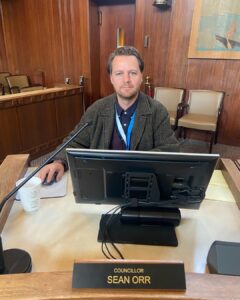By: Alice Fleerackers, SFU Student
A deep dive into digital addiction
sleeplessness, anxiety, relationship issues — these are just a few of a long list of outcomes associated with digital addiction, according to new research by SFU Beedie professor Leyland Pitt and his colleagues.
The study, published in the Journal of Public Policy and Marketing, examined the consequences of society’s growing reliance on digital devices, as well as the factors that contribute to it.
Marketers and app developers, the researchers found, play a key role in encouraging digital addiction. Companies use tactics like gamification and “freemium” subscriptions to keep customers coming back for more, keeping them plugged in to their devices—whether they like it or not.
The implications for health and productivity can be major.
“Digital experiences, like social media, are linked to decreased productivity in the workplace and it’s already costing the U.S. economy $997 billion,” Pitt told SFU News. “Today, texting while driving is now six times more dangerous than drinking and driving.”
But although digital addiction may be on the rise, the researchers believe there are solutions. They conclude their article with several public policy recommendations for how to combat the phenomenon, such as enforcing mandatory app labeling and disclosures in advertising.
Signs of human life in Haida Gwaii more than 2,200 years earlier than expected
A team of researchers led by SFU paleobotanist Rolf Mathewes has uncovered evidence of human life in Haida Gwaii dating back 13,000 years — more than two centuries earlier than previously believed.
The study, published in Vegetation History and Archaeobotany, was conducted at Kilgii Gwaay on Ellen Island, one of the oldest known archaeological sites on the archipelago. Past excavations of the site have unearthed artifacts and fossils from approximately 10,800 to 10,500 years ago, the earliest recorded signs of human activity in the area.
But by analyzing sediment from an ancient buried pond at Kilgii Gwaay, Matthewes and his team were able to uncover evidence that humans were in Haida Gwaii long before then.
“The most remarkable finding,” Matthewes told SFU News, “was when we discovered high concentrations of charcoal in the core that point to man-made fires 2,200 years before the known occupation.”
The team’s work extends previous research in the area, providing a deeper understanding of the first people who called the coast home.














[…] Read More […]